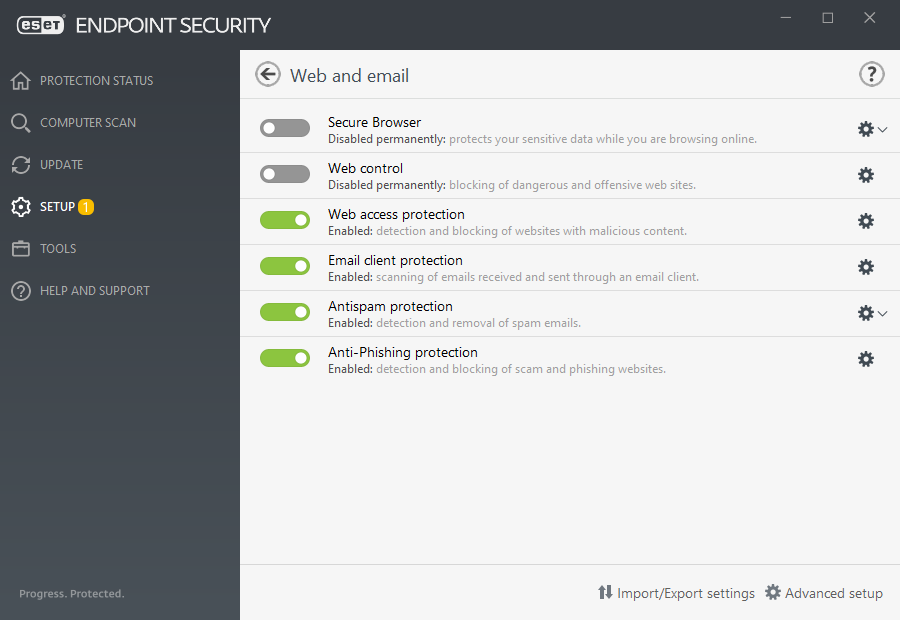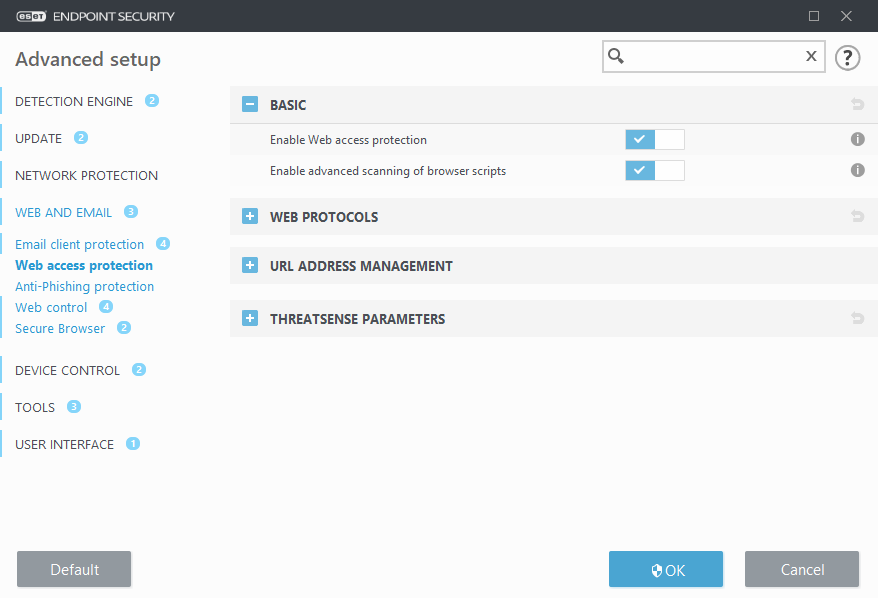Web access protection
Internet connectivity is a standard feature in a personal computer. Unfortunately, it has also become the main medium for transferring malicious code. Web access protection works by monitoring communication between web browsers and remote servers, and complies with HTTP (Hypertext Transfer Protocol) and HTTPS (encrypted communication) rules.
Access to web pages known to contain malicious content is blocked before content is downloaded. All other webpages are scanned by the ThreatSense scanning engine when they are loaded and blocked if malicious content is detected. Web access protection offers two level of protection, blocking by blacklist and blocking by content.
We strongly recommend that Web access protection is enabled. This option can be accessed from the main window of ESET Endpoint Security by navigating to Setup > Internet protection > Web access protection.

Web access protection will display the following message in your browser when the website is blocked:

The following ESET Knowledgebase article may only be available in English: |
The following options are available in Advanced setup (F5) > Web and email > Web access protection:
- Basic – To enable or disable this feature from Advanced setup.
- Web protocols – Enables you to configure monitoring for these standard protocols which are used by most Internet browsers.
- URL address management – Enables you to specify URL addresses to block, allow or exclude from checking.
- ThreatSense parameters – Advanced virus scanner setup – enables you to configure settings such as types of objects to scan (emails, archives, etc.), detection methods for Web access protection etc.

